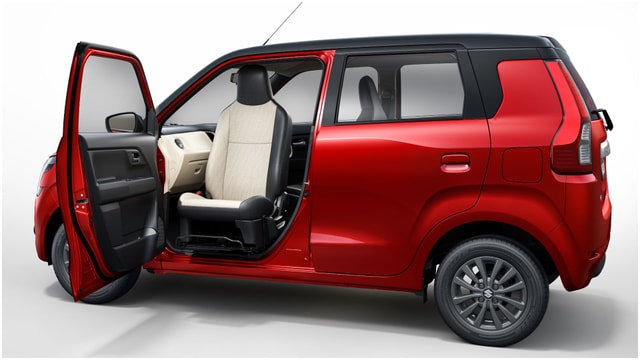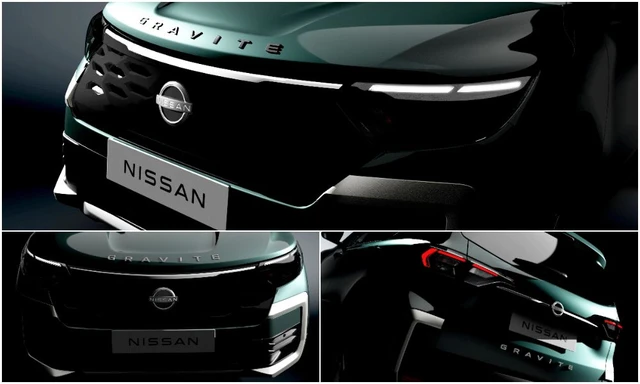Traction Control 101- All About The Technology and Affordable Cars That Offer It

Traction control was introduced worldwide in cars by Cadillac in the year 1979 when they launched the redesigned Eldorado with their Traction Monitoring System. The principle of traction control is mainly derived from limited slip differential which we generally find in rear-wheel-drive cars of yester years. The year 1988 was when traction control was first introduced in the motorcycle market by BMW in their K1 motorcycle. Before the introduction of traction control system, SUVs managed to provide power to all 4 wheels with the use of mechanical limited slip differentials. After the inception of traction control, the system either assists the traditional locking differential or has managed to completely replace the same.

Technology:
Traction Control System is nothing but an advanced application of Anti-lock Brake System or ABS wherein the change in speed of individual wheels is monitored and brakes are applied accordingly. In any vehicle, in order to avoid loss of grip or control, it is essential that all the wheels have same velocity. When any wheel's velocity goes higher than the other wheels' velocity, it implies that the single wheel is getting more than required torque. The ABS computer immediately interferes to reduce the velocity of the faster moving or ‘slipping' wheel and automatically thus increasing the torque for the wheel on the other end of the driving axle. Since we already know that Traction Control's operation is majorly based on the ABS hardware, its inclusion in cars already equipped with ABS isn't something which will cost much to the manufacturers.

Traction control in India:
The Indian car market was introduced to traction control by Mercedes Benz in the year 1999 when they decided to include Electronic Stability Program (ESP) in all of their passenger vehicles across the world. After its introduction in passenger car, Indian car market was exposed to ESP mainly in CBU or CKD cars since the technologies used in locally manufactured cars in India were quite primitive and emphasized more on cost effectiveness rather than road safety. With advancements in technology making it more affordable today and an increased emphasis on road safety as well, many car manufacturers in India like Tata, Mahindra, Volkswagen etc. have started offering ESP or traction control in top-of-the-line variants of many of their models.

Budget Indian cars offering traction control:
With recent technological developments and government mandates that laid emphasis on road safety, features like ABS and airbags which were once considered as luxury offerings have become a standard offering. With ABS becoming a standard feature, Indian car manufacturers have started offering traction control in many of their budget car offerings. Volkswagen offers ESP variants for all of its car models starting from the small Polo and Ameo to the mighty Tiguan. Some of the models like Tiguan have ESP as a standard feature. Mahindra and Mahindra offer ESP variants in all of their cars upwards of the XUV300. Tata motors, yet another brand emphasizing on safety offers ESP variants in all of its premium car models, beginning with the Nexon. Hyundai offers ESP variant in all segments upwards of the i20. Owing to its limited car option availability, Honda offers ESP variants in all the cars on offer by the company.
Trending News
 1 min readTriumph Tracker 400: In Pictures
1 min readTriumph Tracker 400: In Pictures
Latest News
 car&bike Team | Dec 18, 2025KTM 160 Duke With TFT Dash launched At Rs 1.79 LakhThe 5-inch colour TFT dash is borrowed from the 390 Duke and is shared across the brand’s sub-400cc lineup.2 mins read
car&bike Team | Dec 18, 2025KTM 160 Duke With TFT Dash launched At Rs 1.79 LakhThe 5-inch colour TFT dash is borrowed from the 390 Duke and is shared across the brand’s sub-400cc lineup.2 mins read car&bike Team | Dec 18, 2025Lamborghini Urus Seized By Cops Following Viral Clip Of Speeding On Bandra-Worli Sea LinkThe car was seized after a video of it allegedly overspeeding on the Bandra–Worli Sea Link, where the speed limit is capped at 80 kmph, went viral.2 mins read
car&bike Team | Dec 18, 2025Lamborghini Urus Seized By Cops Following Viral Clip Of Speeding On Bandra-Worli Sea LinkThe car was seized after a video of it allegedly overspeeding on the Bandra–Worli Sea Link, where the speed limit is capped at 80 kmph, went viral.2 mins read car&bike Team | Dec 18, 20252025 Ducati XDiavel V4 India Launch Details RevealedThe new Ducati XDiavel V4 will be launched towards the end of December 2025 and will sit alongside the standard Ducati Diavel V4.3 mins read
car&bike Team | Dec 18, 20252025 Ducati XDiavel V4 India Launch Details RevealedThe new Ducati XDiavel V4 will be launched towards the end of December 2025 and will sit alongside the standard Ducati Diavel V4.3 mins read Amaan Ahmed | Dec 18, 2025Maruti WagonR Swivel Front Seat Kit Launched: Check Price, AvailabilityBangalore-based startup TrueAssist Technology Private Limited has developed a mechanism that allows the front passenger seat to swivel outwards, in a bid to improve accessibility for the aged and persons with disabilities.2 mins read
Amaan Ahmed | Dec 18, 2025Maruti WagonR Swivel Front Seat Kit Launched: Check Price, AvailabilityBangalore-based startup TrueAssist Technology Private Limited has developed a mechanism that allows the front passenger seat to swivel outwards, in a bid to improve accessibility for the aged and persons with disabilities.2 mins read Amaan Ahmed | Dec 18, 2025Nissan Gravite MPV (Renault Triber Derivative) To Be Launched Early In 2026Nearly seven years on from the launch of the MPV it shares its underpinnings with arrives Nissan's entry-level 7-seat model; to debut in January.2 mins read
Amaan Ahmed | Dec 18, 2025Nissan Gravite MPV (Renault Triber Derivative) To Be Launched Early In 2026Nearly seven years on from the launch of the MPV it shares its underpinnings with arrives Nissan's entry-level 7-seat model; to debut in January.2 mins read Jafar Rizvi | Dec 18, 2025Tata Sierra Pure, Pure+ Variants Explained In PicturesThe Pure trim of the Sierra is priced from Rs 12.49 lakh to Rs 17.49 lakh (ex-showroom), depending on the powertrain option. Here is a breakdown of what it gets.3 mins read
Jafar Rizvi | Dec 18, 2025Tata Sierra Pure, Pure+ Variants Explained In PicturesThe Pure trim of the Sierra is priced from Rs 12.49 lakh to Rs 17.49 lakh (ex-showroom), depending on the powertrain option. Here is a breakdown of what it gets.3 mins read
 Bilal Firfiray | Dec 18, 2025Mercedes-Benz G450d: The Subtle Power of EvolutionThe Mercedes-Benz G 450d evolves subtly with more power, improved efficiency, and modern tech, while staying true to the timeless G-Class design. And character.4 mins read
Bilal Firfiray | Dec 18, 2025Mercedes-Benz G450d: The Subtle Power of EvolutionThe Mercedes-Benz G 450d evolves subtly with more power, improved efficiency, and modern tech, while staying true to the timeless G-Class design. And character.4 mins read Janak Sorap | Dec 11, 2025Harley-Davidson X440 T First Ride Review: Smarter and SharperHarley-Davidson has taken the X440 and given it a more focused and engaging twist. The result is the X440 T—essentially the same platform but updated in areas that give the motorcycle more appeal and riders more thrill.5 mins read
Janak Sorap | Dec 11, 2025Harley-Davidson X440 T First Ride Review: Smarter and SharperHarley-Davidson has taken the X440 and given it a more focused and engaging twist. The result is the X440 T—essentially the same platform but updated in areas that give the motorcycle more appeal and riders more thrill.5 mins read Shams Raza Naqvi | Dec 10, 20252025 Mini Cooper Convertible Review: More Colour On Indian RoadsThe updated Mini Cooper Convertible is set to be launched in the Indian market in the next few days. We drive it around Jaisalmer for a quick review.1 min read
Shams Raza Naqvi | Dec 10, 20252025 Mini Cooper Convertible Review: More Colour On Indian RoadsThe updated Mini Cooper Convertible is set to be launched in the Indian market in the next few days. We drive it around Jaisalmer for a quick review.1 min read Bilal Firfiray | Dec 8, 2025Tata Sierra Review: India’s New Favourite?Marking its return after a few decades, the reborn Sierra has made everyone sit up and take notice. But is it worth the hype?10 mins read
Bilal Firfiray | Dec 8, 2025Tata Sierra Review: India’s New Favourite?Marking its return after a few decades, the reborn Sierra has made everyone sit up and take notice. But is it worth the hype?10 mins read Girish Karkera | Dec 4, 20252026 Honda Prelude First Drive: Domesticated Civic Type RA sporty-looking coupe built to give customers a taste of performance but not at the expense of everyday practicality.5 mins read
Girish Karkera | Dec 4, 20252026 Honda Prelude First Drive: Domesticated Civic Type RA sporty-looking coupe built to give customers a taste of performance but not at the expense of everyday practicality.5 mins read
































































































































